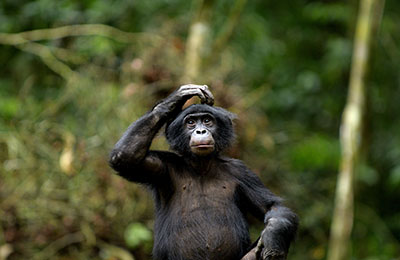HEAS members So Jung Han and Martin Kuhlwilm publish study of the evolutionary history of bonobos
More On Article
- The bioarchaeology of tobacco use: An exploratory study of nicotine and cotinine detection in tooth dentine.
- Buca della Iena and Grotta del Capriolo: New chronological, lithic, and faunal analyses of two late Mousterian sites in Central Italy
- New Publication by HEAS Member Offers New Insights into Ancient Roman Settlement Patterns in Austria
- Home is where my villa is: a machine learning-based predictive suitability map for Roman features in Northern Noricum (ca. 50–500 CE/Lower Austria/AUT)
- HEAS Keynote with Necmi Karul Takes Place in Vienna

In a new study in Current Biology, HEAS members So Jung Han and Martin Kuhlwilm together with an international team, improve our understanding of bonobos. Bonobos are, together with chimpanzees, our closest living relatives, but the genetic structure of their population was so far not well understood. They show that three genetically distinct bonobo groups of inferred Central, Western and Far-Western geographic origin exist within the bonobo range. Their split times are up to ~145,000 years ago, which similar to that of some chimpanzee subspecies. This highlights the need of attention to bonobo substructure, which is fundamental both to understand their evolutionary past and preserve their future.